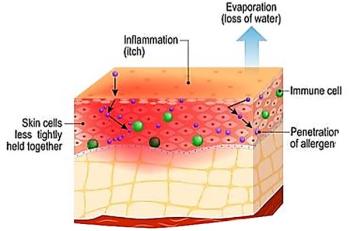
Dupilumab Reduces Asthma Symptoms, Improves Lung Function
Dupilumab is shown to alleviate asthma symptoms and improve a patient's ability to breathe better than standard therapy, according to a new study.
The monoclonal antibody dupilumab alleviates asthma symptoms and improves patients’ ability to breathe better than standard therapies, according to a new study.
The results, published May 21, 2018 in the
“This drug not only reduced severe symptoms of asthma, it improved the ability to breathe. That’s important because these patients have a chronic disabling disease that worsens over time with loss of lung function,” said Mario Castro, MD, the Alan A. and Edith L. Wolff Professor of Pulmonology and Critical Care Medicine at Washington University School of Medicine in St. Louis, Missouri. “So far, we do not have a drug for asthma that changes the course of the disease. Current drugs for severe asthma help reduce trips to the emergency room, for example, but they don’t improve lung function.”
The 52-week QUEST study included 1902 patients with uncontrolled asthma randomized to receive subcutaneous dupilumab as an add-on therapy at doses of 200 or 300 mg every 2 weeks, or matched-volume placebo injections. Primary endpoints included annualized severe exacerbation rate and absolute change from baseline to week 12 in forced expiratory volume in 1 second (FEV1) before bronchodilator use. Secondary endpoints included exacerbation rate and FEV1 in patients with blood eosinophil counts of ≥300 mm3.
The annualized rate of severe asthma exacerbations was 0.46 among patients assigned to 200 mg of dupilumab every 2 weeks and 0.87 among those assigned to a matched placebo, for a 47.7% lower rate with dupilumab vs placebo. Similar results were seen with the dupilumab dose of 300 mg every 2 weeks.
At week 12, the FEV1 had increased by 0.32 L in patients assigned to the lower dose of dupilumab (difference vs matched placebo, 0.14 L). Similar results were seen with the higher dose.
Among patients with a blood eosinophil count of ≥300 mm3, the annualized rate of severe asthma exacerbations was 0.37 among those receiving lower-dose dupilumab vs 1.08 among those receiving a matched placebo (65.8% lower rate with dupilumab vs placebo). Again, similar results were observed with the higher dose.
Blood eosinophilia occurred after the start of the intervention in 52 patients (4.1%) who received dupilumab vs 4 patients (0.6%) who received placebo.
Rates of emergency room visits and hospitalizations also were improved for patients receiving the drug. In the placebo group, on average, 6.5% of the patients required an emergency room visit or hospitalization due to asthma during the study. In the dupilumab group, on average, 3.5% of patients needed emergency care or hospitalization due to asthma.
Patients receiving dupilumab did experience known side effects of the drug, including pain and swelling at the injection site and a short-term bump in the number of eosinophil cells in the blood.
Castro said the drug would likely help patients rely less on steroids for asthma control because it may be necessary for those with severe asthma to take these drugs for decades to enable them to breathe.
References:
Castro M, Corren J, Pavord ID, et al. Dupilumab efficacy and safety in moderate-to-severe uncontrolled asthma. N Engl J Med. https://www.nejm.org/doi/10.1056/NEJMoa1804092?url_ver=Z39.88-2003&rfr_id=ori:rid:crossref.org&rfr_dat=cr_pub%3dwww.ncbi.nlm.nih.gov. Published May 21, 2018. Accessed May 31, 2018.
Newsletter
Enhance your clinical practice with the Patient Care newsletter, offering the latest evidence-based guidelines, diagnostic insights, and treatment strategies for primary care physicians.






















































































































































































































































































